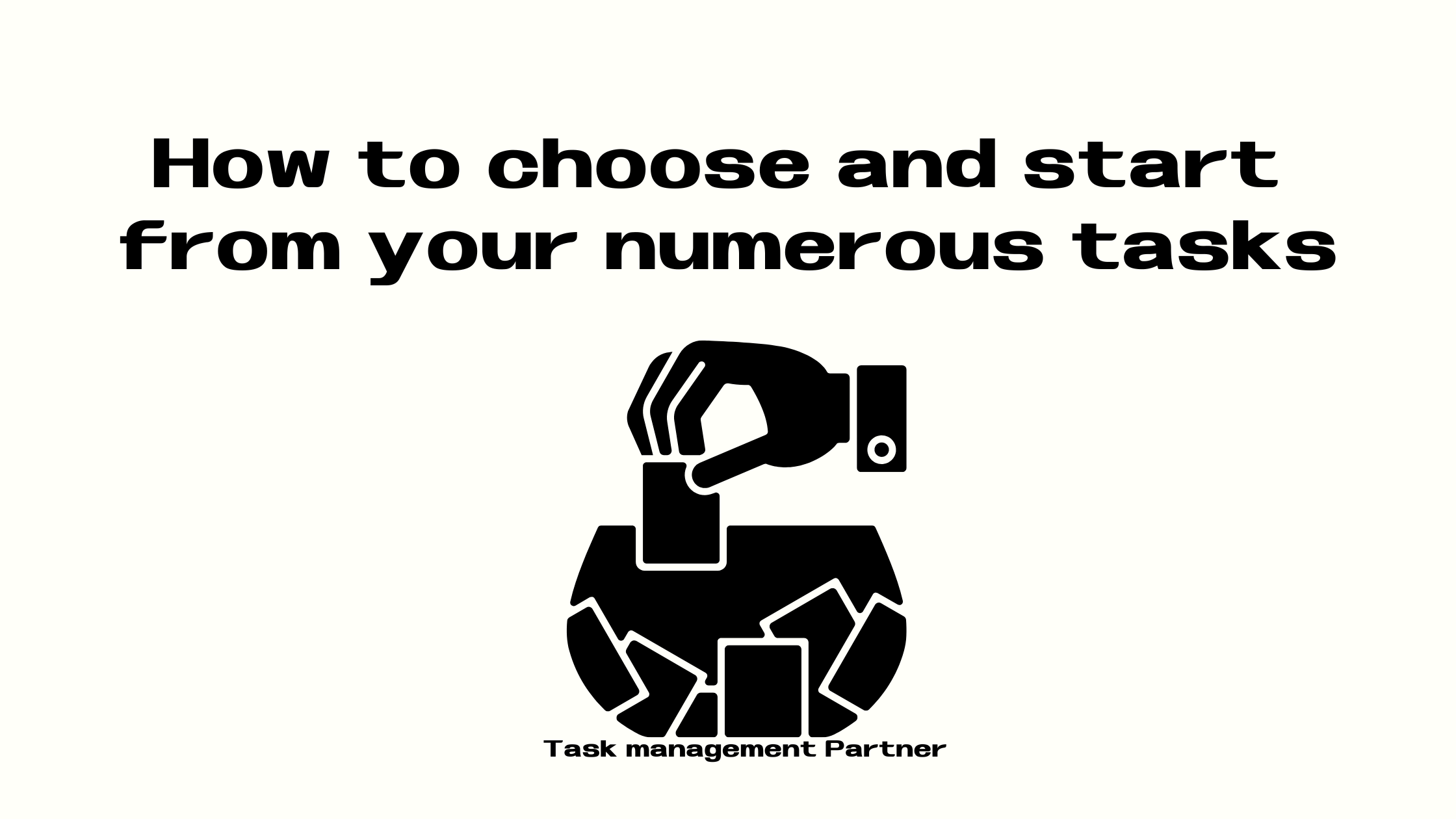“I don’t know where to start!”
You have many tasks on your plate.
Sometimes, or often, you might feel confused and unsure about what to tackle first.
Here’s a simple method to help you get started. It’s easy to follow, so let’s dive in and get started by reading!
What does the situation “I don’t know which task to start with” mean?
I have many tasks, but I don’t know which one I should start with.
Before we explain our method, let’s first confirm this situation.
You have multiple Tasks
You seem to have many tasks, but you can’t figure out exactly how many there are. You’re unsure which task to choose, and as a result, time passes by without progress.
You don’t have any urgent tasks.
Although you have many tasks, none of them have an immediate deadline. If you had a task with a deadline in an hour, you would have to do that one first. But right now, there are no tasks with such high priority.
You’ve recognized these two situations, so please continue reading and try this method.
Prepare only paper and a pen
- Paper: The size is up to you, but we recommend A4 paper divided into four sections.
- Pen or pencil: Either one will work.

If you want to add some convenient items:
- An empty bag or box
- A note, clip, or stapler
Once you’ve gathered your materials, you’re ready to start
How to start
1,Write down one task per sheet of paper.

2, Hold the paper and place or store the papers in a bag or box.

3, You have many tasks, so write all of them on the paper. Then, repeat steps 1 and 2.

4, Once you’ve finished writing all your tasks, hold all the papers and shake or mix them.

5,Draw one paper from the bag or box, and just do it!

6, Once you’ve completed one task, draw the next paper and do the next task!
Let’s track your productivity over one day or one week
- Every day, collect the papers for the tasks you’ve completed.
- Once you have finished several tasks, hold the papers together and attach a note, use a clip, or staple them.
- After a day or a week, review your results.
You can count the completed tasks or assess your productivity. You’ll feel proud of yourself!
Our three recommended tips
Add a “Reward Task” paper
This reward task should take about 15 minutes to complete.
Examples include:
- Eating something
- Playing a short video game, watching YouTube, or checking social media (Note: avoid getting stuck in these activities. We don’t recommend using them as rewards if you can’t stop after a short time).
- Playing an instrument
- Light exercise, stretching, or walking
- Drinking coffee or tea
When you draw the reward paper, you have two options:
One: Return it to the box
Two: Do the reward task, refresh yourself, and then get back to work.
Break large tasks into smaller ones.
We recommend that each task on a piece of paper should be completed in about 30 minutes.

If you have a day off and want to study for two hours, we suggest creating 4 papers, each with “30-minute study.”
When you’re mindful of time, your to-do list becomes more specific, clear, and easier to act on.
Another example: If you write “House cleaning,” it’s too big of a task, so break it down like this: “Clean the refrigerator,” “Clean the bedroom,” etc.
Don’t return the paper!
If you’re tempted to return the paper to the box, you need to confirm the task first.
Open the paper and think, “I don’t want to do this now.” If that happens, don’t return it! Instead, rewrite the task.
However, you can return only the reward paper.
You need to complete each task on paper, and we recommend doing so without exception.
However, if the task feels too big or unclear, don’t do it as is. Instead, rewrite the task to make it more manageable.
For example, if you want to return the “Prepare presentation” task, you can rewrite it as “Make slides,” “Research for 30 minutes,” “Contact someone for the presentation,” etc. Feel free to break the task down into more detailed steps.
It offers a different type of To-Do list
This method is a different approach to the traditional To-Do list, but it doesn’t rely on any specific To-Do tools.
It simply involves writing down your tasks and completing them.
This is a great way to start using a To-Do list. If you’ve thought, “A To-Do list is useful, but it’s hard to start or keep up with,” we recommend this method. It’s also perfect if you haven’t found a tool that works for you or if you sometimes feel like changing things up.
This method can be used anywhere, anytime, and by anyone—children can use it too.
If you have many tasks and don’t know where to start, try this simple and easy method.
If you want to use a To-Do tool more effectively or need help organizing your tasks, let’s do it together. We’re always here to support you.
